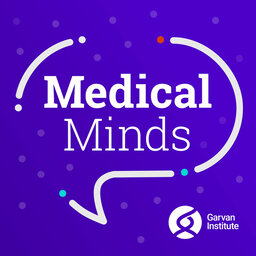Pushing the limits of genomics
Genomics is fundamentally changing the way we think about health and disease and driving forward personalised treatment options that would have been pure science fiction just a few years ago. Still, some parts of our genome are more ‘mysterious’ than others. In this episode, we meet Garvan researcher Dr Ira Deveson who is spearheading cutting-edge DNA sequencing methods to future-proof how genomics will integrate into healthcare.
 Medical Minds
Medical Minds


